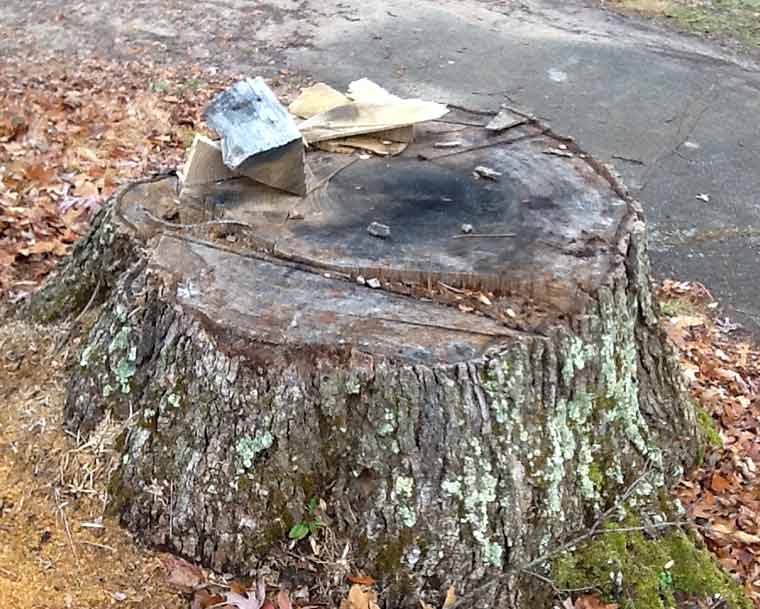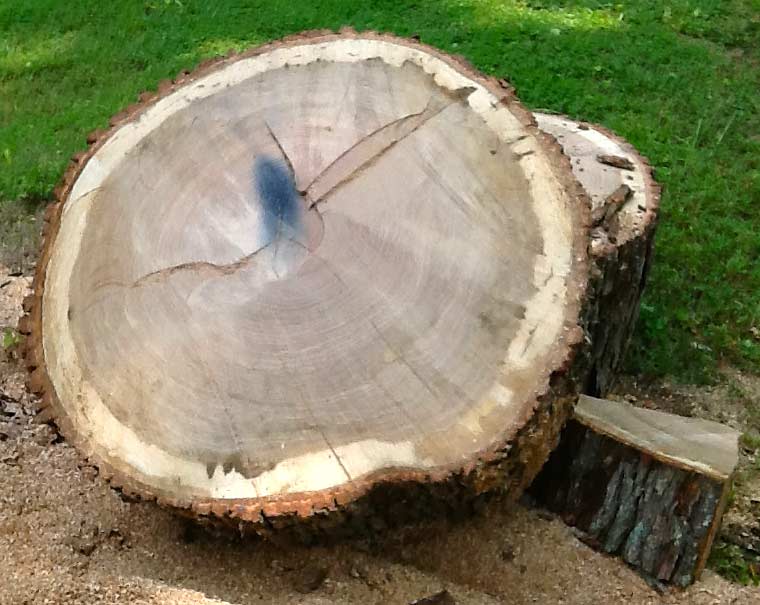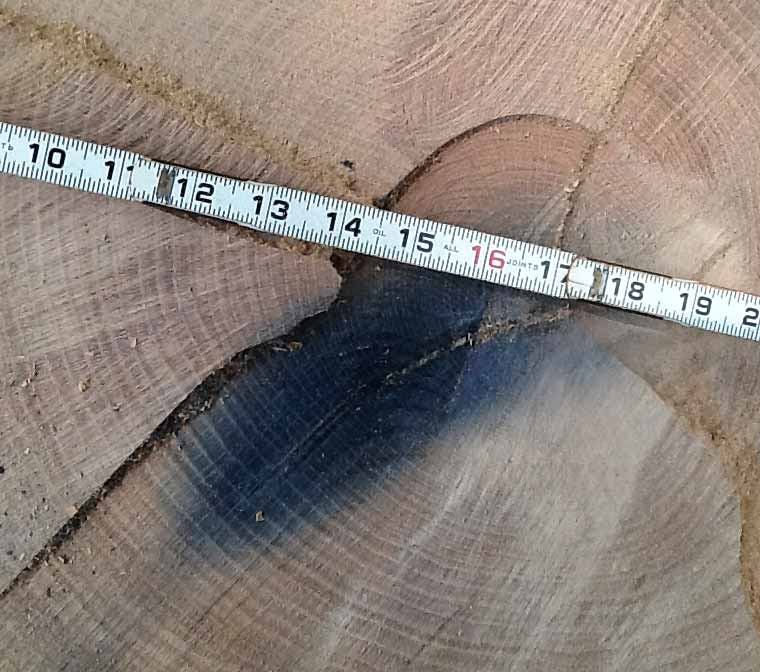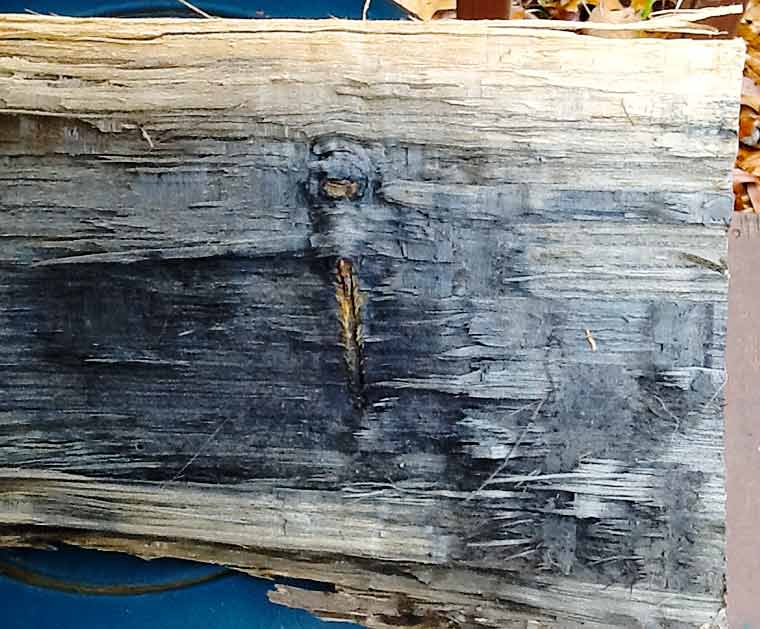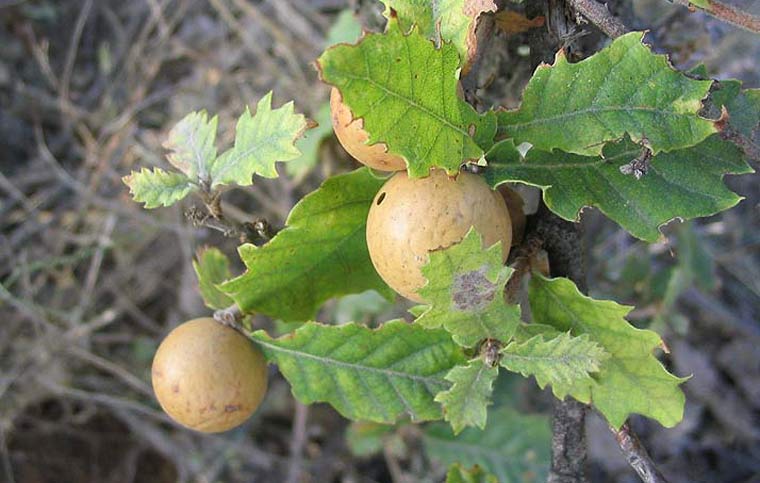When I visited my friend Ronnie in Indiana this last summer, he told me an interesting story about a large White Oak (Quercus alba) tree that he had decided to sell. When the lumberman cut the tree down, there was a dark blue-black stain inside the tree. He told Ronnie that the stain indicated there was metal in the tree somewhere, probably a nail or a fragment of wire. The stain was quite distinct, and when a four-foot-long log was cut from the basal end of the felled tree, the stain was still present in the distal end. Thus the stain extended from the stump at least four feet up into the tree (and probably much further). Just how far was not determined, because the lumberman took the rest of the tree trunk away as a complete log.
The stain lowered the value of Ronnie’s tree. The stain would make boards that contained it undesirable for furniture. Veneer production from the log would also be inadvisable. To produce wood veneer, a log is rounded and placed in a device that can rotate the log around its long axis while a very sharp blade peels off a thin layer of wood (the veneer). This thin layer is then glued onto a base of less valuable wood, and the complex is used for furniture or other woodworking. If a piece of metal is present in a log, it might break the blade used in the veneer machine. Also, the deep blue stain would be unsightly if it appeared in veneer intended to be used for furniture.The metal might even constitute a hazard to sawing the tree up, because it could cause damage to the saw (and the saw operator).
The dark-blue staining material is an iron tannate. Tannins are a class of astringent, bitter compounds found in oak trees and many other plants. They give the bitter taste to acorns and unripe fruit, and are produced by the plants to deter predators. (Tannin and tannic acid are sometimes used interchangeably, but tannic acid is one specific type of the many tannins found in plants.)
The word “tannin” comes from the Latin word (tannum) for “oak bark” and the related Old High German name “tanna” for an oak or fir tree (as in the Christmas Carol “Oh Tannenbaum”, which mean “Oh Fir Tree” ). Tannins extracted from oak were traditionally used for “tanning” animal hides. Tanning means to treat an animal skin to produce leather, which is less susceptible to decay and more durable.
When iron, such as a nail or a piece of wire is left in an oak tree, some iron goes in solution and reacts with the tannins in the oak. The resultant iron tannate is the dark blue-black compound you can see in Ronnie’s pictures. It soaks into the wood fibers and forms quite a permanent stain.
The lumberman left the four foot long basal log, and Ronnie subsequently began to cut it into shorter sections to be split for firewood. Imagine his surprise when he split one piece of the log and discovered the piece of metal in question on the surface of the split log. It was a nail, now much deteriorated, but clearly associated with the stain.
Ronnie’s son, Kirk, counted the rings in the oak stump to estimate the age of the tree. Some of the rings were very thin and difficult to distinguish, so it was difficult to make an exact count. However, the tree appeared to be about 120 years old. Ronnie counted about 40 rings from the center of the stump out to where he found the remains of the head of the nail. So the tree germinated from an acorn in about 1894. The nail was driven into the tree about 1934.
It was realized quite early in history that iron tannates could be used as ink. To produce this ink, tannins are extracted from oak or fir trees, and mixed with iron in some form or another, such as scrap pieces of iron, nails, wire, or some solution containing an iron compound. Early on, it was discovered that the galls that form on oak trees (sometimes called “oak apples”) in response to insect oviposition have a high concentration of tannins. When these are used as the source of tannins, the product is called gall ink, iron gall ink, or oak gall ink. When used on paper or vellum, It forms very durable, non water-soluble marks.
The earliest written instructions for making gall ink date from Pliny the Elder, who lived from about AD 23 to August 25, AD-79. (Pliny the Elder was killed in the volcanic eruption of Mt. Vesuvius that destroyed Pompeii.) Gall ink was widely used as a standard ink through the early 20th century. Johann Sebastian Bach’s original scores, for example, were written using gall ink.
Note: The photographs in this post were contributed by my friend Ronnie, except for the last one showing oak galls. That photograph was produced by Jean Tosti and licensed under a CC BY-SA 3.0 license.

